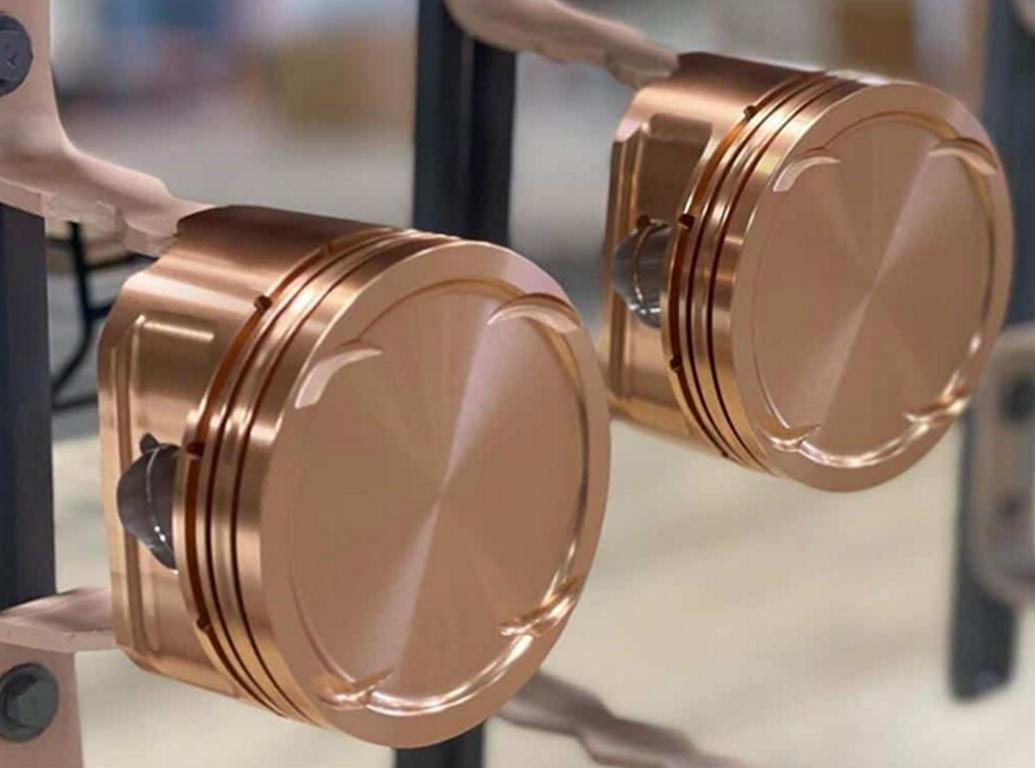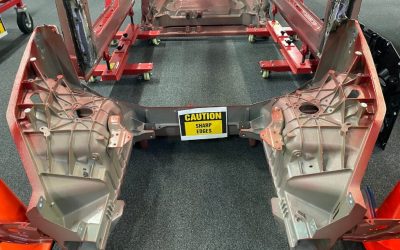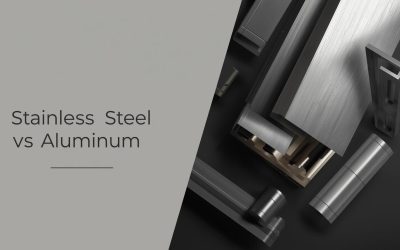How Much Does It Cost To Anodize Aluminum? Discover the Real Cost!
How much does it cost to anodize aluminum? This blog will explain the goal and details. Learn about different parts, technical numbers, and terms. Find out prices for materials, batch sizes, and anodizing types. Understand what makes the cost go up or down. This blog helps you know how much it costs to anodize aluminum.
What Factors Affect the Cost to Anodize Aluminum?
Material Costs
Anodizing aluminum needs specific materials. Each type has different prices. For example, 6061 aluminum costs more than 7075. They need special chemicals too.
Chemicals help make the surface strong. Some chemicals are pricy. This makes the cost higher. Sometimes, special finishes are needed. These add extra expenses. The size of the item matters. Larger items use more material. More material means more cost.
Batch Size
The cost changes with batch size. Small batches have higher costs per item. Large batches are cheaper. This is due to spreading fixed costs. Setup time impacts the cost too.
Short setup times save money. Each piece must fit the tank. Tanks hold different quantities. Bigger tanks lower the cost. They hold more items at once. Lowering costs is important for savings.
Surface Preparation
Surface preparation is crucial. It starts with cleaning. Cleaning removes dirt and oil. Next is etching. Etching makes the surface rough. Rough surfaces bond better.
They use different acids for etching. Acid types affect the cost to anodize aluminum. Polishing might be needed. Polished surfaces cost more. The more steps needed, the higher the cost. Proper preparation ensures quality results.
Alloy Variations
Different alloys affect costs. 6061 aluminum is common. It anodizes well. 7075 alloy costs more. It has more zinc. Zinc makes anodizing harder. Harder anodizing needs more time.
More time increases cost. How much does it cost to anodize aluminum depends on the alloy. Some alloys are stronger. Stronger alloys might cost more. Each alloy needs special care. Special care means extra expenses.
Pre-treatment
Pre-treatment steps are key. Cleaning is first. Clean parts work better. Next, degreasing removes oils. Oils stop anodizing. They use solvents for degreasing. Solvent costs add up.
Etching follows degreasing. Etching prepares the surface. It uses acids. Acid costs vary. Each step adds cost. More steps mean higher expenses. Proper pre-treatment is crucial. It ensures good anodizing. The anodized aluminum cost is impacted by each step.
| Factor | Description | Cost Impact | Examples | Typical Cost (%) | Influence on Quality |
| Material Costs | Aluminum price per pound | High | 6061, 7075 alloys | 20-30% | Direct |
| Batch Size | Number of parts in a batch | Medium | 100, 500 units | 10-20% | Moderate |
| Surface Preparation | Cleaning, polishing methods | Moderate | Chemical etching | 15-25% | High |
| Alloy Variations | Different aluminum grades | High | 1100, 2024 alloys | 25-35% | Significant |
| Pre-treatment | Prior treatments before anodizing | Medium | Degreasing, etching | 10-15% | High |
| Thickness of Coating | Desired coating thickness | Variable | 10-25 microns | 5-10% | Direct |
| Type of Anodizing | Process chosen (Type I, II, III) | High | Chromic, Sulfuric | 20-40% | Significant |
Table on What Factors Affect the Cost to Anodize Aluminum!
How Does the Type of Anodizing Process Influence the Cost?
Type I
Type I uses chromic acid. It forms a thin, soft coating. This coating is about 0.5 to 1.5 microns thick. It is good for corrosion resistance. It is best for delicate parts. Some aerospace parts use it. The process needs less voltage. This lowers the cost. Small items are ideal. Larger items might not be suitable. This keeps costs manageable.
Type II
Type II uses sulfuric acid. It creates a thicker, harder coating. The thickness ranges from 10 to 25 microns. This type offers better durability. It is good for coloring parts.
Dye absorption is excellent. The process needs more voltage. This raises the cost. It is suitable for many applications. Common uses include architectural items. Higher durability justifies the expense.
Type III
Type III is also called hard anodizing. It uses sulfuric acid but needs cold temperatures. The coating is very thick and hard. It ranges from 25 to 150 microns.
It offers the best wear resistance. It needs the highest voltage. This increases costs. How much does it cost to anodize aluminum varies with the type. Heavy machinery parts use this type. It is ideal for extreme conditions. The benefits justify the high cost.
Cost Differences
Cost differences depend on anodizing types. Type I is cheapest. It needs less material and time. Type II costs more. It needs more voltage and thicker coatings. Type III is the most expensive.
It requires high voltage and special conditions. Each type has unique benefits. Choosing the right type affects the total cost. Knowing the differences helps in planning.
Process Benefits
Each anodizing type offers benefits. Type I protects delicate parts. Type II adds color options. Type III provides extreme durability. These benefits are crucial for different needs. Choosing the right type depends on use. Benefits justify the costs. Different processes suit various industries.
Selecting the best type ensures value. Proper choice enhances product quality. Understanding benefits helps decision-making. Knowing how much does anodizing aluminum cost is essential.
Process Drawbacks
Each anodizing type has drawbacks. Type I offers limited durability. Type II can be costly for thick coatings. Type III needs high voltage and special conditions. These drawbacks affect the choice.
Understanding them is key. Some processes may not suit all needs. Knowing limits helps in making better decisions. Balancing pros and cons is crucial.
What is the Role of Thickness and Coating Specifications in Cost?
Coating Thickness
Thicker coatings need more material. They offer better protection. Type-III anodizing uses the thickest coatings. Thicker layers need more voltage. Higher voltage increases the cost.
Thicker coatings take longer to apply. Longer times mean higher expenses. The thickness ranges from 10 to 150 microns. Each micron adds to the total cost. Knowing thickness needs helps control costs.
Specific Requirements
Specific requirements affect costs. Some parts need exact thickness. Tight tolerances are crucial. Meeting them increases costs. They need special equipment. This equipment adds expenses. Extra testing might be needed. Testing ensures quality.
How much does it cost to anodize aluminum depends on specific requirements. Specific colors can be required. Coloring adds cost. Special finishes are sometimes needed. Each requirement adds to the overall cost. Detailed planning helps manage expenses.
Industry Standards
Industry standards guide anodizing. Standards ensure quality. Different industries have different standards. Aerospace uses MIL-A-8625. Automotive follows ISO 9001.
Standards require specific parameters. Meeting these needs extra steps. Extra steps raise costs. Strict standards guarantee safety. Safety is crucial in many fields. Compliance with standards is necessary. It influences final costs. The aluminum anodizing cost varies with these standards.
Pricing Impact
Pricing is influenced by various factors. Material costs play a role. Electricity use adds to the cost. Special finishes increase prices. Batch sizes impact pricing too.
Large batches lower costs. Small batches cost more. Each step adds to the total. Precise planning controls costs. Knowing all factors is key. It helps keep prices manageable. CNC machining parts will be more easy to anodize, check the How much does it cost to CNC aluminum page.
Durability
Durability impacts cost significantly. Thicker coatings last longer. They resist wear and tear. Type III offers the best durability. Durable coatings need more material. More material means higher costs. Durable coatings need higher voltage. This increases expenses.
Durability is crucial for some parts. How much does it cost to anodize aluminum for durability is a key question. Choosing the right type is important. Durability justifies higher costs. Understanding needs helps manage expenses.
How Do Anodizing Facilities and Equipment Affect Costs?
Facility Types
It is important to understand that facilities can be of different size and capacity. Small setups process batches up to 50 items. Over fifty items are managed in the large facilities daily. Each has different costs. Small plants require limited workforce as compared to large ones.
Large ones need more automation. Automated lines incorporate the use of PLCs and HMI screens. They decrease labor but at the same time, they increase the first costs. Facility type impacts expenses. Proper selection is key.
Pricing Structures
Pricing structures differ. Some of them cost $5 per piece. Some use batch pricing such as $300 for 100 pieces. Batch pricing can be cheaper. Large batches spread costs. Some provide fixed prices in order to avoid complicated charges. Others have tiered pricing.
Therefore, higher volumes lead to lower costs per piece. Knowledge of these structures helps in the process of budgeting. Choices should fit the needs and help to save money.
Equipment Costs
Equipment costs vary. Anodizing tanks cost $10,000. High-tech rectifiers are $15,000. Older machines need repairs. Repairs add expenses. New machines require less maintenance than older ones. Maintenance costs are expected to be between $500 and $1,000 per year.
For instance, some equipment may consume 5kW per hour. Power usage affects bills. How much does it cost to anodize aluminum is influenced by equipment choices. Minimizing expenditures in the long run is all about making the right investments.
Efficiency
Efficiency is crucial. Efficient processes save time. Time savings reduce costs. CNC controllers are used in automated systems. CNC increases productivity and precision. Faster work lowers expenses. Some setups reuse electrolyte solutions. Recycling cuts chemical costs.
Energy efficient systems use about 10 percent less energy. Energy savings reduce bills. Proper management enhances efficiency. Overall costs are positively affected by efficiency.
Cost-Effectiveness
Cost-effectiveness is key. Efficient facilities save money. Use of PLCs and HMIs in automation reduces costs. High-quality equipment reduces maintenance. Appropriate pricing strategies align with requirements. Small plants can manage batches effectively.
Large facilities are capable of handling larger volumes. Cost control reduced energy consumption by 15 percent. Knowledge of these factors helps in planning. Affordable decisions make for efficiency and effectiveness.
How Does Anodizing Affect the Properties of Aluminum?
Corrosion Resistance
Anodizing creates a protective layer. This layer is called an oxide film. It is very thin, about 0.0001 inches. This film resists corrosion. It stops water and air from reaching the metal.
Aluminum alloy 6061-T6 shows great results. It stays strong even in harsh environments. Salt spray tests show 3,000 hours of resistance. This makes anodizing cost-effective for long-term use.
Durability
Anodizing cast aluminum makes aluminum very hard. The surface hardness reaches up to 60 HRC. This is harder than stainless steel. It protects against scratches. Wear resistance increases by 10 times.
This helps in high-wear areas. Components like aircraft parts last longer. They perform better under stress. This saves on replacement costs. How much does it cost to anodize aluminum is offset by savings on replacements.
Maintenance Costs
Anodized surfaces need less cleaning. The oxide layer repels dirt and grime. Maintenance frequency is reduced. This lowers costs. Fewer chemicals are used.
This is good for the environment. Cleaning time is cut in half. Workers can focus on other tasks. Overall, maintenance becomes simpler and cheaper.
Aesthetic Appeal
Anodizing adds color options. Dye can be added to the oxide layer. Colors stay vibrant. They do not fade easily. Architects love this for building facades. Custom colors match any design. Surface finishes like matte or glossy are possible. Each finish adds a unique look. This increases the aesthetic value of products.
Enhanced Properties
Anodizing improves thermal insulation. It helps in heat dissipation. This is crucial for electronic components. Heat sinks work more efficiently. Electrical insulation is also enhanced.
Dielectric strength can reach 2,000 volts. This protects sensitive electronics. Enhanced properties mean better performance. How much does it cost to anodize aluminum is justified by better performance. This justifies the anodizing cost.
Long-Term Benefits
Anodized aluminum lasts longer. Its lifespan can exceed 20 years. This reduces the need for replacements. Long-term costs are lower. Initial investment is quickly recovered.
Products maintain their look and function. This enhances customer satisfaction. They see the value in durable products. This makes anodizing a smart choice.
What are the Typical Costs Associated with Anodizing Aluminum?
Cost Ranges
Anodizing costs vary. For small parts, it may be $0.10 per piece. Larger items like panels can cost $1.50 or even more. Thickness of the oxide layer affects prices. A 0.0005-inch layer costs more.
Different colors also change costs. Red and black are pricier. Some companies offer bulk discounts. Higher volumes reduce the unit cost. Understanding these factors helps in budgeting.
Small Parts
Small projects include parts like bolts and screws. Anodizing these can cost $0.05 to $0.20 each. Batch processing lowers the cost per item. Using Type II anodizing is common.
It provides good corrosion resistance. Small parts benefit from uniform coating. The process ensures consistent quality. Small batches are ideal for prototypes. How much does it cost to anodize aluminum for small projects? They help in testing before mass production.
Large Parts
Large projects involve items like frames and panels. Costs can range from $0.80 to $2.00 per square foot. Thickness affects pricing. A 0.001-inch layer is more expensive.
Anodizing large surfaces requires more time. This adds to labor costs. Different finishes, like matte or glossy, change the price. Bulk orders get better rates. This helps in managing expenses.
Cost Calculation
Calculating costs involves several factors. Part size is crucial. Larger parts cost more to anodize. Oxide layer thickness impacts pricing. Thicker layers are pricier.
Color choices also matter. Some dyes are more costly. Labor and setup fees add to the total. Volume discounts apply for large orders. Accurate calculations aid in budgeting and planning.
Company Methods
Different companies use varied methods. Some offer Type III anodizing. This provides higher durability. Others specialize in custom colors. Each method affects pricing. Automated systems reduce labor costs. Hand finishing adds to expenses. Some companies charge for masking.
This protects specific areas from anodizing. How much does it cost to anodize aluminum depends on the method used. Knowing these methods helps in choosing the right provider.
Conclusion
How much does it cost to anodize aluminum? Costs depend on many things like parts and technical numbers. Knowing these will help with planning. Proper understanding ensures you get the best value. Visit aludiecasting.com for more details. Get expert help today. Make the best choice for your anodizing aluminum needs, GC Precision Mould Co., Ltd is one of top 10 aluminum die casting manufacturers in China.








0 Comments